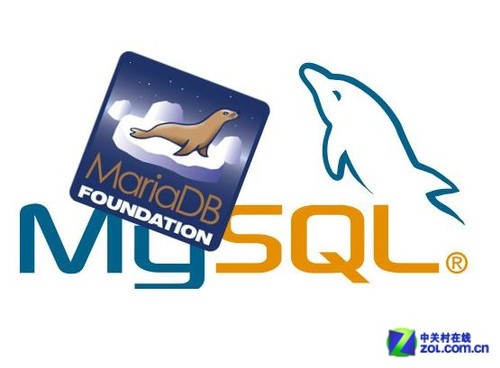Recommended 10 mysql master-slave architectures
Recently when deploying the MySQL master-slave replication architecture, I encountered "Last_IO_Error: Fatal error: The slave I/O thread stops because master and slave have equal MySQL server UUIDs; these UUIDs must be different for replication to work." This error message. That is, the same UUID is used in the master-slave architecture. Check the server_id system variable, it is already a different setting, what is the reason? What follows is a detailed description. 1. Error message mysql> show slave staus; Last_IO_Error: Fatal error:&nb
1. slave have equal MySQL server UUIDs

Introduction: Recently when deploying the MySQL master-slave replication architecture, I encountered "Last_IO_Error: Fatal error: The slave I/O thread stops because master and slave have equal MySQL server UUIDs; these UUIDs must be different for replication to work." this error message. That is, the same UUID is used in the master-slave architecture. Check the server_id system variable, it is no longer
2. Use Innobackupex to quickly build (repair) MySQL master-slave architecture
Introduction: There are many ways to build MySQL master-slave. The traditional mysqldump method is one of the choices for many people. But for larger databases, this method is not an ideal choice. Use Xtrabackup to quickly and easily build or repair mysql master-slave architecture. This article describes using innobackupex to quickly build or repair a master-slave architecture. For reference.
3. Use innobackupex to build mysql master-slave architecture based on the slave library

Introduction: Using a relatively short length, detailed analysis, pseudo code, code and animation, we introduce quick sort and heap sort in detail, and analyze the algorithm ideas and complexity. Worth a look
4. Building gtid master-slave based on mysqldump
Introduction: When implementing the MySQL master-slave architecture During the process, you can use the mysqldump method to build the master-slave. Mysqldump has generated GTID related information during the backup process, that is, these GTIDs can be skipped. For unskipped GTIDs, the IO thread will copy them to the slave server and be executed by the SQL thread. This article mainly demonstrates how mysqldump builds mysql master-slave in GTID mode.
5. MySQL GTID error handling summary

Introduction: MySQL GTID is a product evolved on the basis of traditional mysql master-slave replication, which uses UUID plus transaction ID to ensure the uniqueness of each thing. This method of operation means that we no longer need to care about the so-called log_file and log_Pos, but simply tell the slave library which server to find the main library from. It simplifies the master-slave setup and failover process, and is safer and more reliable than traditional replication. Since GTIDs are continuous without holes, when data conflicts occur in the master-slave library, they can be skipped by injecting empty things. This article mainly describes the error handling method of GTID master-slave architecture.
6. mysqldump quickly builds a specific library master-slave architecture (GTID)

Introduction: For a MySQL database with a small amount of data to build a master-slave architecture, it is a good choice to use the mysqldump tool to implement it. Combined with the MySQL GTID feature, it makes high availability a breeze. This article is a supplement to building gtid master-slave based on mysqldump. It mainly introduces the implementation of GTID master-slave based on multi-repository level, that is, not the entire instance level. The following is a detailed description and examples of this article.
7. MySQL automatic failover tool--mysqlfailover

Introduction: mysqlfailover is an important high-availability command included in the MySQL utilities toolkit, which is used to perform health detection on the master-slave replication architecture and implement automatic failover. It will regularly detect the health status of each node at specified intervals. Once it captures that the master node is unavailable, it will trigger failover-related actions and automatically perform failover to the best slave server at the moment. At the same time, other slave nodes in the entire master-slave architecture will point to the new master node, automatically completing the master-slave topology update.
8. Solution to MySQL master-slave replication inconsistency
Introduction: Basically, for a slightly larger website, MySQL master-slave replication will be configured. On the one hand, the master-slave of MySQL is used to separate the reading and writing of the database. On the other hand, the stand-alone backup of MySQL itself is not very strong. Generally, the master-slave architecture is used to perform data backup on the slave.
9. Major failure caused by inconsistency between master and slave data! Please pay attention!

Introduction: Fault description: Master-slave architecture, after the master went down, it switched to the slave, and the result was from A lot of data was lost (the data consistency was not verified before the downtime). There was no delay in synchronization at that time. When the user logged in, it could not be verified in the database. The result was
10. Redis master-slave automatic failover

##Introduction: There is a problem with the persistence of the Redis master-slave architecture. That is to say, the conclusion of the previous test is that persistence needs to be configured on the main instance to ensure that data is not lost across instances. In this way, the main instance will inevitably
in the process of persisting data to the hard disk. [Related Q&A recommendations]:
mysql master-slave architecture, what should I do if the master server fails?
The above is the detailed content of Recommended 10 mysql master-slave architectures. For more information, please follow other related articles on the PHP Chinese website!

Hot AI Tools

Undresser.AI Undress
AI-powered app for creating realistic nude photos

AI Clothes Remover
Online AI tool for removing clothes from photos.

Undress AI Tool
Undress images for free

Clothoff.io
AI clothes remover

Video Face Swap
Swap faces in any video effortlessly with our completely free AI face swap tool!

Hot Article

Hot Tools

Notepad++7.3.1
Easy-to-use and free code editor

SublimeText3 Chinese version
Chinese version, very easy to use

Zend Studio 13.0.1
Powerful PHP integrated development environment

Dreamweaver CS6
Visual web development tools

SublimeText3 Mac version
God-level code editing software (SublimeText3)

Hot Topics
 When might a full table scan be faster than using an index in MySQL?
Apr 09, 2025 am 12:05 AM
When might a full table scan be faster than using an index in MySQL?
Apr 09, 2025 am 12:05 AM
Full table scanning may be faster in MySQL than using indexes. Specific cases include: 1) the data volume is small; 2) when the query returns a large amount of data; 3) when the index column is not highly selective; 4) when the complex query. By analyzing query plans, optimizing indexes, avoiding over-index and regularly maintaining tables, you can make the best choices in practical applications.
 Explain InnoDB Full-Text Search capabilities.
Apr 02, 2025 pm 06:09 PM
Explain InnoDB Full-Text Search capabilities.
Apr 02, 2025 pm 06:09 PM
InnoDB's full-text search capabilities are very powerful, which can significantly improve database query efficiency and ability to process large amounts of text data. 1) InnoDB implements full-text search through inverted indexing, supporting basic and advanced search queries. 2) Use MATCH and AGAINST keywords to search, support Boolean mode and phrase search. 3) Optimization methods include using word segmentation technology, periodic rebuilding of indexes and adjusting cache size to improve performance and accuracy.
 Can I install mysql on Windows 7
Apr 08, 2025 pm 03:21 PM
Can I install mysql on Windows 7
Apr 08, 2025 pm 03:21 PM
Yes, MySQL can be installed on Windows 7, and although Microsoft has stopped supporting Windows 7, MySQL is still compatible with it. However, the following points should be noted during the installation process: Download the MySQL installer for Windows. Select the appropriate version of MySQL (community or enterprise). Select the appropriate installation directory and character set during the installation process. Set the root user password and keep it properly. Connect to the database for testing. Note the compatibility and security issues on Windows 7, and it is recommended to upgrade to a supported operating system.
 Difference between clustered index and non-clustered index (secondary index) in InnoDB.
Apr 02, 2025 pm 06:25 PM
Difference between clustered index and non-clustered index (secondary index) in InnoDB.
Apr 02, 2025 pm 06:25 PM
The difference between clustered index and non-clustered index is: 1. Clustered index stores data rows in the index structure, which is suitable for querying by primary key and range. 2. The non-clustered index stores index key values and pointers to data rows, and is suitable for non-primary key column queries.
 MySQL: Simple Concepts for Easy Learning
Apr 10, 2025 am 09:29 AM
MySQL: Simple Concepts for Easy Learning
Apr 10, 2025 am 09:29 AM
MySQL is an open source relational database management system. 1) Create database and tables: Use the CREATEDATABASE and CREATETABLE commands. 2) Basic operations: INSERT, UPDATE, DELETE and SELECT. 3) Advanced operations: JOIN, subquery and transaction processing. 4) Debugging skills: Check syntax, data type and permissions. 5) Optimization suggestions: Use indexes, avoid SELECT* and use transactions.
 The relationship between mysql user and database
Apr 08, 2025 pm 07:15 PM
The relationship between mysql user and database
Apr 08, 2025 pm 07:15 PM
In MySQL database, the relationship between the user and the database is defined by permissions and tables. The user has a username and password to access the database. Permissions are granted through the GRANT command, while the table is created by the CREATE TABLE command. To establish a relationship between a user and a database, you need to create a database, create a user, and then grant permissions.
 Explain different types of MySQL indexes (B-Tree, Hash, Full-text, Spatial).
Apr 02, 2025 pm 07:05 PM
Explain different types of MySQL indexes (B-Tree, Hash, Full-text, Spatial).
Apr 02, 2025 pm 07:05 PM
MySQL supports four index types: B-Tree, Hash, Full-text, and Spatial. 1.B-Tree index is suitable for equal value search, range query and sorting. 2. Hash index is suitable for equal value searches, but does not support range query and sorting. 3. Full-text index is used for full-text search and is suitable for processing large amounts of text data. 4. Spatial index is used for geospatial data query and is suitable for GIS applications.
 Can mysql and mariadb coexist
Apr 08, 2025 pm 02:27 PM
Can mysql and mariadb coexist
Apr 08, 2025 pm 02:27 PM
MySQL and MariaDB can coexist, but need to be configured with caution. The key is to allocate different port numbers and data directories to each database, and adjust parameters such as memory allocation and cache size. Connection pooling, application configuration, and version differences also need to be considered and need to be carefully tested and planned to avoid pitfalls. Running two databases simultaneously can cause performance problems in situations where resources are limited.






